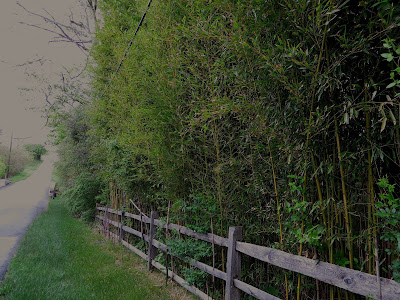Another common ground cover is the lesser Celandine. It is invasive (native to Europe) and prefers shady moist areas. The flower illustration is from Wikipedia since the flower is generally gone and the plant is beginning to die back(note the vellow brown color in the woods). The picture of large celandine patch is from the middle north side of cloverlea. It has the heart shaped leaf but with the little nut-like fruit at the base. It can appear as early as January, less frost sensitive, in the buttercup family and a relative to marsh marigold.
The more hardcore foragers will eat the young plants, eat the roots after boiling, and the older leaves after boiling twice. Like most buttercups there is a toxic element. A compound in the sap, protoanemonin, can cause sores on the skin. It was used by beggars in the Middle Ages to gain sympathy. Gardeners find it not only invasive but not a good groundcover. It will almost disappear by June in time for the summer erosion. It is toxic to some domestic animals.
So you can eat all you want but probably better to rip it out and not take any chances.
Bamboo is not particularly prominent this time of year but apparently it is the time to harvest. A family from northern China was entering a bamboo thicket in the county. I showed her some shoots harvested from Western Run. They were ok but she prefers twice that thickness and up to twice the length. It should be peeled as shown, boiled for couple of minutes and then stir fried. Southern China will eat them raw in salads and without the boiling but she gets stomach upsets without the boiling step(also adds oil and seasonings). The nearest bamboo stand might be on the hill going up Charles to Bellona west side. Good hunting. She said the end of the month will be too late. Is there a little tension between north and south China?
 |
| Western Run grove where handful of shoots were found |
 |
| shoot as taken,smaller than ideal by half |
 |
| Grove to be harvested,went well into the center to get larger shoots |
 |
| Shoot before and after she peeled one. Tried small amount raw. Again need larger size |

































